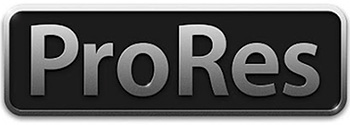Tip #589: Pick the Right Version of ProRes
… for Codecs & Media
Tip #589: Pick the Right Version of ProRes
Larry Jordan – LarryJordan.com
I recommend ProRes 422 for camera media and ProRes 4444 for computer media.


Apple provides this description of the six different versions of ProRes:
Apple ProRes 4444 XQ: The highest-quality version of ProRes for 4:4:4:4 image sources (including alpha channels), with a very high data rate to preserve the detail in high-dynamic-range imagery generated by today’s highest-quality digital image sensors.
Apple ProRes 4444: An extremely high-quality version of ProRes for 4:4:4:4 image sources (including alpha channels). This codec features full-resolution, mastering-quality 4:4:4:4 RGBA color and visual fidelity that is perceptually indistinguishable from the original material. Apple ProRes 4444 is a high-quality solution for storing and exchanging motion graphics and composites, with excellent multi-generation performance and a mathematically lossless alpha channel up to 16 bits.
NOTE: Apple ProRes 4444 XQ and Apple ProRes 4444 are ideal for the exchange of motion graphics media because they are virtually lossless, and are the only ProRes codecs that support alpha channels.
Apple ProRes 422 HQ: A higher-data-rate version of Apple ProRes 422 that preserves visual quality at the same high level as Apple ProRes 4444, but for 4:2:2 image sources.
Apple ProRes 422: A high-quality compressed codec offering nearly all the benefits of Apple ProRes 422 HQ, but at 66 percent of the data rate for even better multistream, real-time editing performance.
Apple ProRes 422 LT: A more highly compressed codec than Apple ProRes 422, with roughly 70 percent of the data rate and 30 percent smaller file sizes. This codec is perfect for environments where storage capacity and data rate are at a premium.
Apple ProRes 422 Proxy: An even more highly compressed codec than Apple ProRes 422 LT, intended for use in offline workflows that require low data rates but full-resolution video.
My general recommendation is to use ProRes 422 for all images shot on a camera (except RAW formats), and ProRes 4444 for all media converted from RAW or Log or media generated on a computer.
EXTRA CREDIT
Here’s an Apple White Paper that explains ProRes in more detail.


Hi Larry,
Figured I could ask you this since you’ve been teaching for so long. Exporting a high quality master used to make compressed versions has been the workflow since the beginning of time yet editors from say 2015 forward seem to think this is the most painful thing since writing a term paper and I don’t get it. I have the hardest time getting these brilliant minds to do this simple thing. They always want to go from Premiere timeline to highly compressed h264. What tricks, bribery or hypnosis techniques do you recommend for convincing them to take the extra 10 min to add this step in? It drives me crazy
Christopher:
Just because you are young doesn’t mean you have a clue. The challenge is to get them to see the big picture. The reason we archive a high-quality master file is that we don’t know all the different ways we will need the video. If you only have one output – which is true for all school projects – H.264 is fine. But, if you need a version to archive, a version for Vimeo, a version for a local website and then recuts for YouTube segments, doing all that work from an H.264 master will take extra time and reduce quality.
You need to stress that in the real-world, a single master file gets edited, re-edited, compressed, re-commpressed and reused multiple times over its life. That’s why we need to export a high quality master file – to give us the flexibility we need to meet future needs.
larry
Larry
Thank you for this discussion on ProRes, I have generally held back using ProRes in an export for the web, and I know that your lessons are in a 720 resolution, so do you use a ProRes in a 720 resolution?
Jim:
I edit and export using ProRes. For my needs, which are training, 720p projects are fine, because it makes the onscreen text easy to read. However, ProRes, itself, is resolution independent – pick whatever frame size / frame rate you need.
While I EXPORT a ProRes master file, all my web videos are compressed to H.264 before uploading to YouTube.
Larry